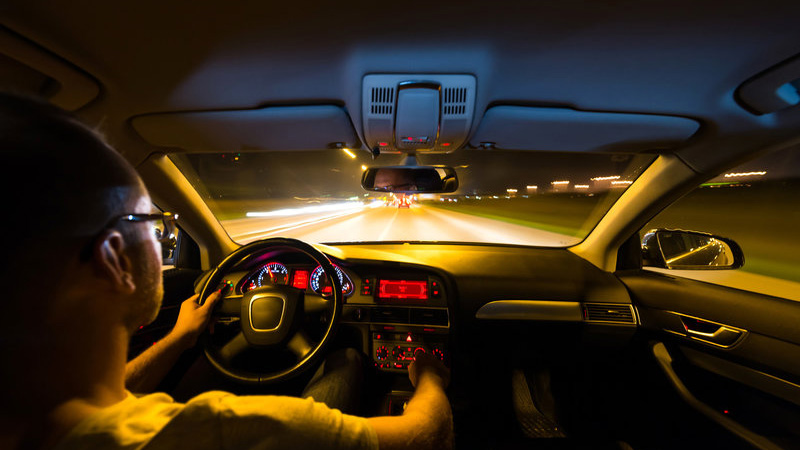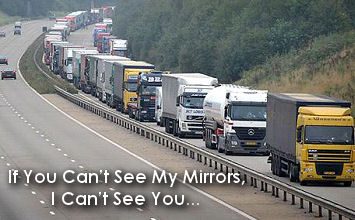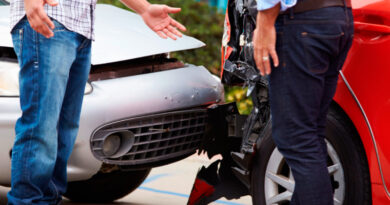7 Ways to Drive Safely After Dark
Driving during the night is often irritating and difficult. However, even more than that, it can also be deadly because your vision is severely lacking in the dark. Your eyes are unable to correctly see peripherally, distinguish color and determine depth perception. Fatalities on the road are three times more likely at nighttime.
With a little effort, however, you can maximize your safety on the road, even you don’t have the newest or best car. Here are seven ways to drive safely after dark.

-
Clean your Mirrors and Windshields
Dirty or streaky windows or mirrors can not only block your field of view, but also can distort the surrounding lights and make it even more difficult or nearly impossible for you to see clearly at night. Even if your window looks clean in the daylight, there still could be vision- preventing grime or streaks in the darkness of night.
Try using a newspaper to wipe down both your front and back windshield. Newspaper helps to remove dirt, oils, and other muck that a cloth might leave behind. Also, newspaper rids your windshield of smears and streaks optimizing your vision in the dark. Keep a microfiber cloth in your car to clean your mirrors. Don’t touch your windshield or mirror with your hands. The natural oils from your hands can add to the streaks.
-
Dim Your Internal Lights
Find and use the dimmer switch for your dashboard lights. Bright dashboard lights can cause windshield reflections and make it more difficult for your eyes to correctly adjust in the dark. By using the dimmer switch, your visibility at night increases. Also, keep in mind that all other lights in the interior can cause a distraction including map lights. It is best to just not use the auxiliary lights at all while you are driving.
-
Get Your Vision Tested
You should have your vision tested every one to three years. The older you are, the more often you should have them checked. You can drastically improve your safety at night by correcting your vision. Also, sometimes people end up needing another prescription for night. If you end up needing vision-correcting glasses, choose a lens with a coating that is anti-reflective. It is the best option for you to see clearly during night driving.
-
Optimize Your Lights
First of all, test of your lights regularly to make sure they are all working. You’ll also want to make sure they are all as bright as they are supposed to be. Sometimes a light starts to dim before it stops working. It is important to change that light as soon as you notice it is not as bright as before.
Also, take the time to adjust your headlights so that they are both focused in the right direction and illuminate the road in the best possible way. This can be done by a professional or yourself. If you choose to do it yourself, look it up in the owner’s manual to get a clear idea of what needs to be done.
Finally, make sure all your vehicle’s headlights clean and they are able to light the area in front of your vehicle fully. Older cars sometimes develop a film over the plastic encasement that needs to be polished off. You can buy a kit to polish your headlights.
-
Choose the Best Route
Large, major highways tend to be well lit, have bright and easy-to-see lane markers and are often much safer. According to research, the worst type of road to drive on is a two-lane road. There is much less lighting that makes not only the road difficult to see but also the surroundings. Two-lane roads are often maintained far less and can have faded lane dividers or missing signs or markers.
Sometimes, narrow roads are curvy and winding and have many stretches that can be extremely dangerous — even for people who know the path well. It is suggested to take a safer route if possible. If that is not possible, it has been determined that slowing down a bit can be helpful on these types of roads.
-
Watch for Animals
Wildlife encounters are far more likely at night. If you have your high beams on, animal eyes will glow and help you to spot them as early as possible. Just make sure you dim your vehicle’s lights when another car is coming toward you.
It has been determined that the best way to handle an animal on the roadway is by slowing down or stopping, rather than swerving or veering out of the way.
-
In the Event of an Accident, Get to Safety
No one wants to dwell on the possibility of having an accident. But, if you do, you should be prepared. According to SteinLaw, a firm with car accident lawyers in Aventura, “Turn on your hazard lights and get out of harm’s way, even if you have to steer your vehicle to the side of the road.”By getting your car off the road and making its presence known with its hazard lights, you can avoid a secondary accident involving another motorist.



